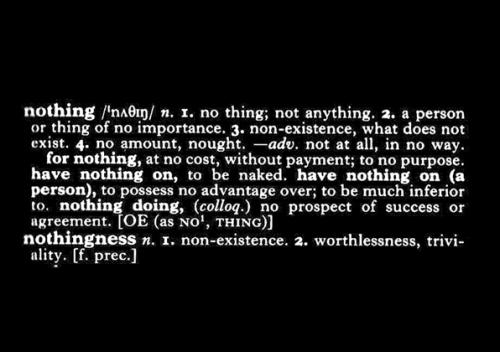Nothingness
dal 8/10/2004 al 27/11/2004
Segnalato da
Art & Language
Robert Barry
Hartmut Boehm
Stefan Bruggemann
Martin Creed
Attilla Csorgo
Manfred Erjautz
Ceal Floyer
Dan Graham
Graham Gussin
Alexander Gutke
John Hilliard
Michael Kienzer
Igor Kopystiansky
Svetlana Kopystiansky
Stephen Little
Jonathan Monk
Max Neuhaus
Tobias Putrih
Werner Reiterer
Santiago Sierra
Markus Wilfling
Erwin Wurm
Neil Robert Wenman
8/10/2004
Nothingness
Galerie Eugen Lendl, Graz
''Nothing means no-thing, the absence of thing. It differs substantially from some-thing, any-thing, and every-thing. Yet paradoxically, there is a distinct relationship between these four notions. Nothing is the parent of something, anything and everything.''Neil Robert Wenman. Artists: Art & Language, Robert Barry, Hartmut Boehm, Stefan Bruggemann, Martin Creed, Attilla Csorgo, Manfred Erjautz, Ceal Floyer, Dan Graham, Graham Gussin, Alexander Gutke, John Hilliard, Michael Kienzer, Igor & Svetlana Kopystiansky, Stephen Little, Jonathan Monk, Max Neuhaus, Tobias Putrih, Werner Reiterer, Santiago Sierra, Markus Wilfling, Erwin Wurm

Curator: Neil Robert Wenman (London)
Art & Language / Robert Barry / Hartmut Boehm / Stefan Bruggemann / Martin Creed / Attilla Csorgo / Manfred Erjautz / Ceal Floyer / Dan Graham / Graham Gussin / Alexander Gutke / John Hilliard / Michael Kienzer / Igor & Svetlana Kopystiansky / Stephen Little / Jonathan Monk / Max Neuhaus / Tobias Putrih / Werner Reiterer / Santiago Sierra / Markus Wilfling / Erwin Wurm
''Ever since the birth of 'Conceptual' art in the 1960s, with its
challenges to tradition and authority, artists have continued to
represent ideas of nothing, most notably through the concept of
'dematerialization', a term coined by art critic Lucy R Lippard in 1967.
This cultural attitude was eloquently captured by American composer,
John Cage, in 1961 with his declaration "I have nothing to say, and I'm
saying it" and symbolised this search for a minimum, a stratagem for
ending commercialism characterised by excessively materialised, solid or
even furnished art works or products.
The role of the artist as non-active, passive or even absent was
exemplified perhaps most radically by British artist, Keith Arnatt's
proposition, Is it Possible for Me to Do Nothing as My Contribution to
This Exhibition? 1970. Here, Arnatt forced the parameters of
Conceptualism to the extreme and yet ridiculed the very premise on which
it is based. The concept of literally, and by that one means physically,
doing nothing represented the ultimate negation of art practice and the
demise of object-centred discussion.
This interest in emptiness, in nothingness, can be found in many
disciplines including an important sector of modern philosophy. We know
for example that the philosophers such as Heidegger and Sartre have, at
a given moment made nothingness the centre of their thought and that
Heidegger even went so far as to say that "existence is the extreme
nothingness which is simultaneously copiousness".
Yet what is nothingness? What are the spatial differences between terms
such as nothingness, vacuum, void, emptiness and the numerology of zero?
'Nothing' means no-thing, the absence of thing. It differs substantially
from some-thing, any-thing, and every-thing. Yet paradoxically, there is
a distinct relationship between these four notions. Nothing is the
parent of something, anything and everything. [.] ''
Neil Robert Wenman, "a building to house nothing", 2004.
Image: Neil Robert Wenman, "NOTHING", 2003, digital print.
GALERIE EUGEN LENDL - NEW SPACE, PALAIS WILDENSTEIN, A-8010 GRAZ, HANS-SACHS-GASSE 1/I
Opening hours:
Tuesday to Friday : 11.00 a.m. to 7.00 p.m., Saturday : 10.00 a.m. to 1.00 p.m.



